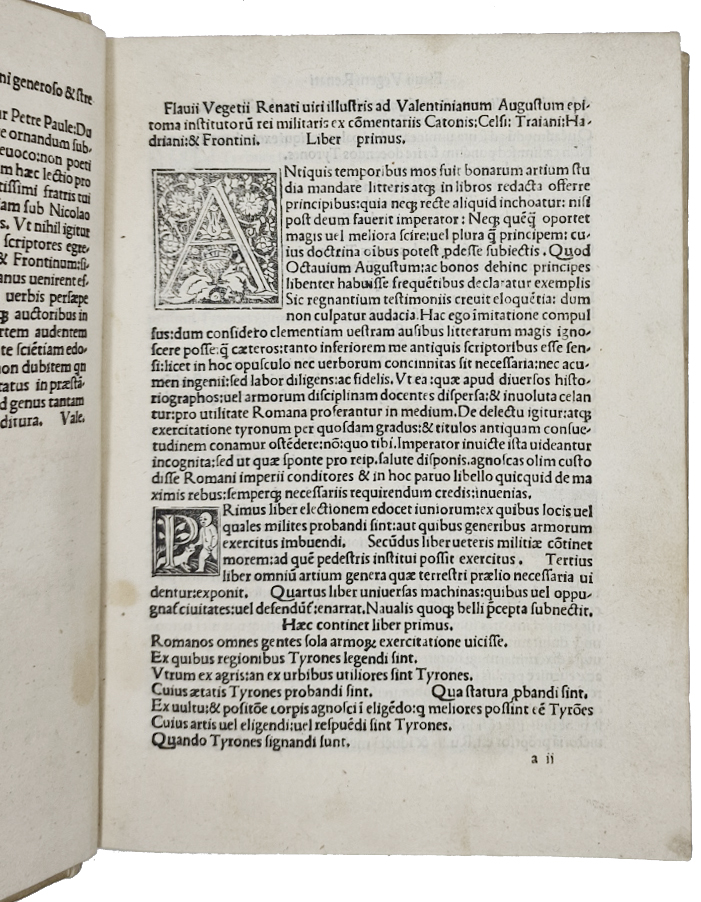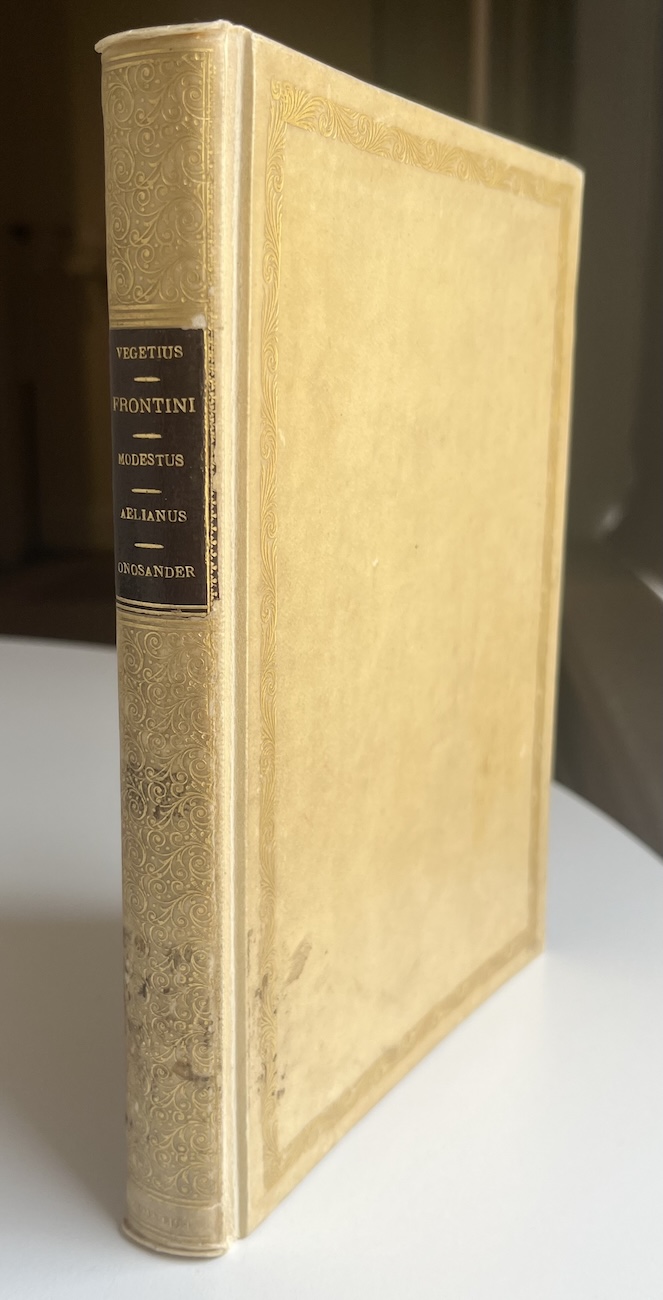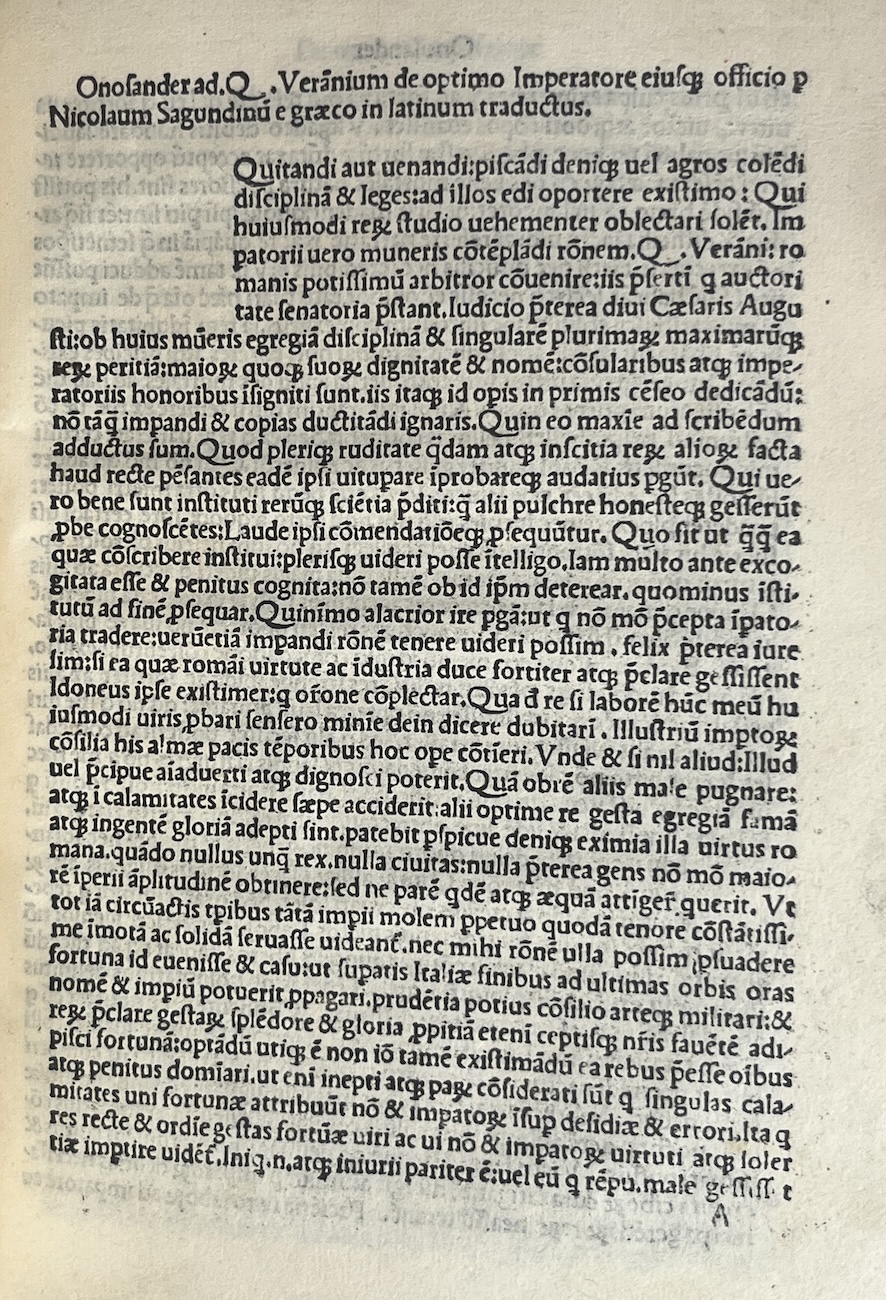Onosander’s Strategikos or The General and other classics of Roman military theory
ONOSANDER. Strategikos in: Scriptores rei militaris [also with military works by Vegetius, Frontinus, and Aelian]
Rome: Eucharius Silber, 1494
Quarto. 104 leaves. Text diagrams. Early 20th-century vellum gilt, t.e.g. Very good condition.
First edition of Onosander’s Strategikos , also known as The General. This is “the earliest military treatise wherein so much stress is laid upon the commander’s duties, the morale of the troops, and the ethical side of warfare. It enjoyed much popularity in the Renaissance” (Sarton).
Onosander’s work is “a military-ethical treatise on the qualities, background, and conduct of an ideal Roman general” (Tougher & Evans, Generalship in Ancient Greece, Rome and Byzantium). Writing during the reign of Claudius, he focuses on the moral, social, and military qualities and attitudes expected of a virtuous and successful general. He gives special importance to the general’s skill in rhetoric as a means of encouraging and leading his troops. The work considers the broad principles of command, duties of a general, formation of an army, preparation for battle, the choice of staff, attitude to war, religious duties, military formations, and conduct in allied and enemy territories.
Strategikos maintained an important place in the theory of military leadership for centuries. It was an influential text among Byzantine military writers including the emperors Maurice and Leo VI. Onosander’s ideas enjoyed a second flowering in the Renaissance because of their spread in the present book and in the works of Machiavelli, Lipsius, and others who emphasized leadership, moral virtue, and character, not merely tactics.
This famous collection presents five major Roman military writings in single volume. This edition is the first to contain Onosander’s Strategikos, here printed for the first time. The others are similarly important:
Vegetius’s De Re Militari covers recruits, organization, tactics and strategy, fortification and naval warfare. It was “the foundation of military learning for every European commander, from William the Silent to Frederick the Great” (Britannica). This famous work introduces “the most famous dictum in the history of swordsmanship … strike with the point, not the edge” (Anglo, The Martial Arts of Renaissance Europe).
Frontinus’s Stratagemata presents examples from Greek and Roman history for the edification of officers.
The pseudo-Modestus De Vocabulis rei Militaris is the first printed dictionary of military terms.
Aelian’s Tactics or Tactica “was of particular value for its explanation of the operation of the Macedonian phalanx, an infantry formation developed by Philip II of Macedon, and used by his son Alexander the Great to conquer much of the known world” (Norman, History of Information).
The final work is Onosander’s Strategikos, here printed for the first time, in a Latin translation by the Venetian humanist Niccolò Sagundino.
Goff S-344.
$12,500





